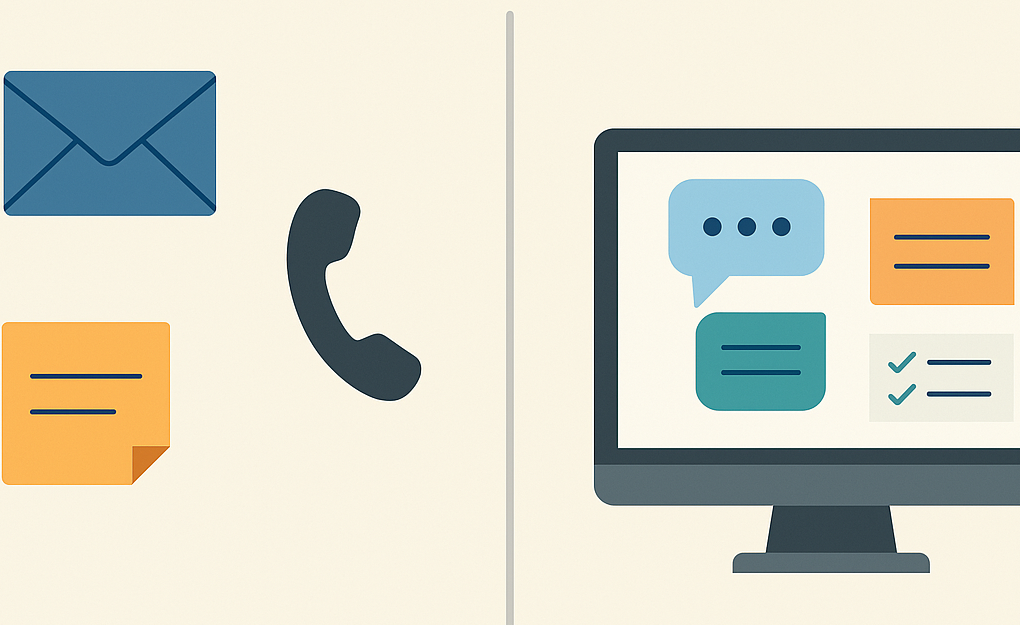Why Your Business Needs Centralized Incident Management to Track It All
At AdmiralBridge Software, we believe managing incidents should not be confusing or time-consuming. Whether it is a safety issue, theft event, a customer complaint, or a workplace incident, it is important to have centralized incident management where everything is tracked. That is where a centralized incident management tool comes in.
A centralized incident management tool means all incidents are reported, tracked, and reviewed in one system. It helps everyone work from the same page and improves how your business responds to problems.
Here are the top 10 reasons why this kind of tool can make a big difference.
1. Keep All Communications in One Place
When something goes wrong, people start talking. Managers, employees, and head office may all have something to say. But if everyone is using different tools to talk about it, like emails, phone calls, or paper notes, things can get messy.
A centralized tool brings all those conversations into one system. Everyone sees the same notes and updates. This helps prevent confusion, missed steps, and duplicated work.
2. Make Decisions Using Real Data
You cannot fix what you do not understand. A centralized system helps track what kind of incidents are happening, how often, and where.
Instead of guessing, you can look at real numbers. This helps you see patterns, plan ahead, and put the right support in the right places. With data, you can make smarter decisions that actually work.

3. Help Teams Work Together
Solving a problem is often a team effort. HR might need to review the situation, a manager might need to follow up with an employee, and a safety officer may need to check if rules were followed.
If everyone is using different tools, it is hard to stay on track. A centralized tool lets everyone see the same case, leave comments, and track updates. Everyone stays connected and works faster together.
4. Support Local Managers with the Right Tools
Local managers are often the first people to deal with an incident. They need to report what happened quickly and clearly. A good system should make that easy.
With a centralized tool, managers can fill out a simple form, upload photos or notes, and know exactly what happens next. The system helps guide them, so they do not have to guess who to contact or what to do.
5. Give Senior Leaders the Full Picture
Senior leaders cannot be in every store or office at once. But they still need to know what is going on. A centralized tool gives them quick access to important information.
They can see which locations are having more incidents, what kinds of issues are common, and how well teams are responding. This helps them give better support to local managers and focus on the areas that need attention.
6. Save Time with Templates and Automation
Reporting the same kind of incident over and over takes time. But with templates, you can speed things up. A centralized system lets you use the same format each time, so people know what to expect.
You can also set up automatic alerts, reminders, or follow-up steps. This keeps the process moving without needing to remember every detail yourself. It saves time and reduces mistakes.
7. Improve Training with Real Examples
New employees learn better when they see real examples. A centralized tool can store past cases that show how different situations were handled.
These examples help new team members understand what to do, how to report something properly, and what a good response looks like. This builds confidence and prepares them for real-world problems.
8. Spot Repeat Problems Faster
If something keeps going wrong, a centralized system will help you notice. Maybe the same kind of injury is happening in one store. Or maybe complaints are coming from one region.
When all your data is in one place, it is easier to spot trends. Once you know what the pattern is, you can take action to fix the root cause before it gets worse.
9. Protect Your Business with a Solid Record
Sometimes, your business needs to demonstrate that an issue was handled correctly, whether for legal proceedings, insurance claims, or safety inspections. In these situations, having a complete and trustworthy record makes all the difference. That’s why it’s essential for your system of record to include non-modifiable creation dates and user attribution. This safeguards data integrity and supports your team when disputes or questions arise.
A centralized tool keeps a clear history of what happened, who was involved, and what actions were taken. This record is time-stamped and organized, so it is easy to find when you need it.

10. Build a Safer, Smarter Workplace
When employees know that problems are taken seriously, it builds trust. A centralized system shows that your business is organized and ready to respond.
It helps create a workplace where people feel supported and safe. It also shows that leadership is paying attention, which encourages people to speak up when they see an issue. This kind of workplace is not only safer, but also more productive and positive.
Final Thoughts
If your team is still using spreadsheets, emails, or paper forms to manage incidents, it may be time for a better solution. A centralized incident management tool is more than just a tracker. It helps your team respond faster, work better together, and make stronger decisions.
At AdmiralBridge Software, we have built our platform to help you do all of that and more. Our goal is to make it easier for teams to stay organized, connected, and ready to respond to any issue.
If you are ready to bring everything together and give your team a smarter way to manage incidents, we are here to help.
Let’s work together to build a safer, stronger future for your business.

